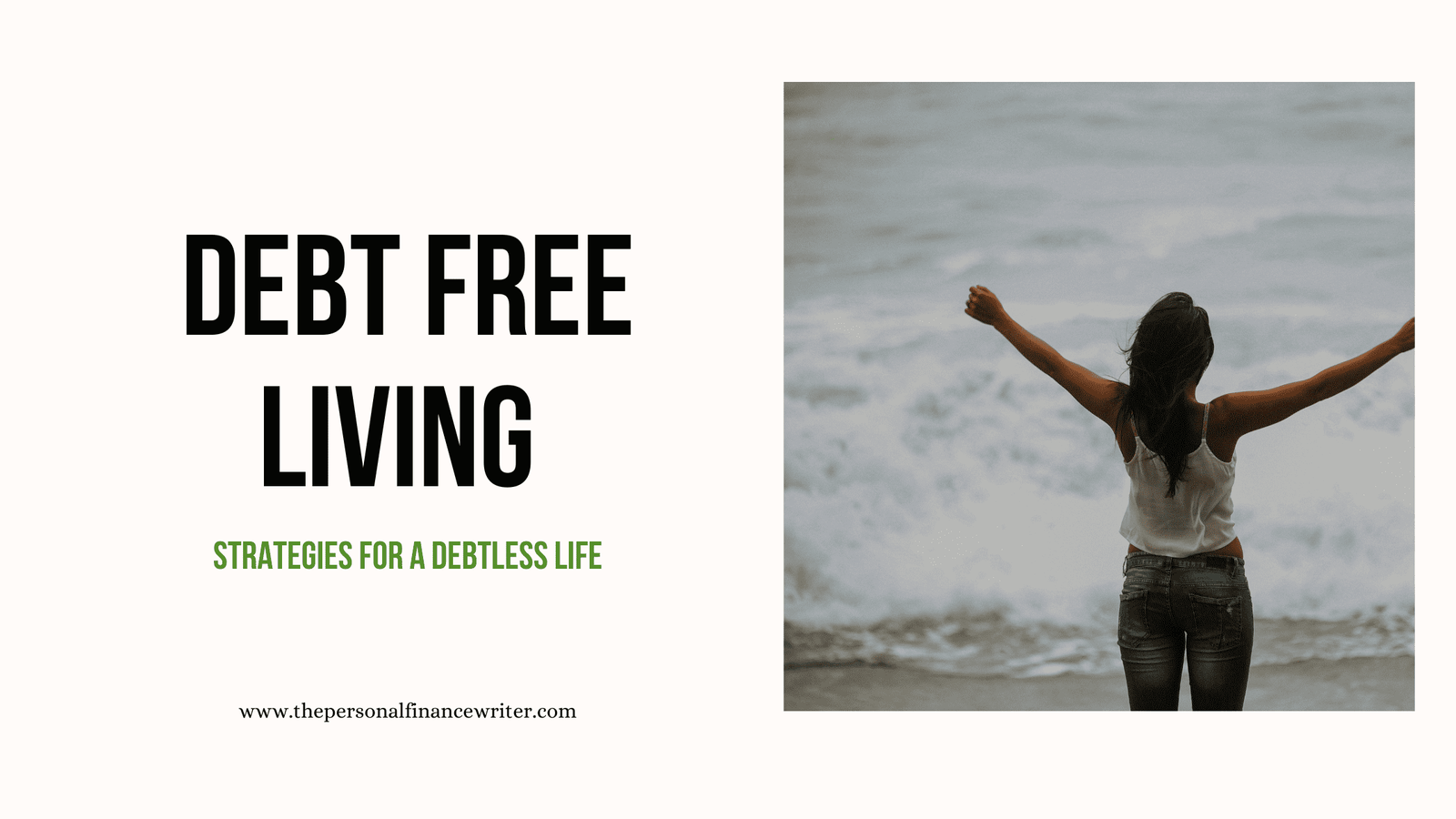Table of Contents
Introduction
Welcome to the journey towards debt free living! In this blog, we will explore what it means to live without debt, why it’s important, and actionable steps you can take to achieve this financial freedom. Whether you’re just starting your financial journey or looking to improve your money management skills, this guide is for you.
What is Debt Free Living?
Debt-free living refers to a lifestyle where individuals or households have eliminated all forms of debt, including credit card debt, loans, and mortgages. It’s about taking control of your finances, reducing financial stress, and achieving financial independence.
Why Debt Free Living Matters
1. Financial Freedom: Being debt-free allows you to have more control over your money, make financial decisions without constraints, and work towards your long-term goals, such as retirement or starting a business.
2. Reduced Stress: Living without debt reduces financial stress and anxiety, leading to better mental and emotional well-being.
3. Savings and Investments: Without debt payments, you can allocate more money towards savings, investments, and building wealth for the future.
4. Flexibility: Debt-free living provides flexibility to pursue opportunities, take risks, and adapt to changes in your life without the burden of debt holding you back.
Steps to Achieve Debt Free Living
Step 1: Understand Your Debt
When you hear about “debt free living,” it means being in a situation where you don’t owe money to anyone. To get there, you first need to understand what debts you have. These can include things like credit card balances, student loans, car loans, or a mortgage (a loan for buying a house).
Step 2: Know Your Financial Situation
Take some time to gather all your financial information. This includes how much money you make (your income) and how much you spend (your expenses). Understanding your finances will help you see where your money is going each month.
Step 3: Create a Budget
Think of a budget as a plan for your money. Start by listing all your sources of income. This could be money from your job, freelance work, or any other way you make money. Next, write down all your expenses. These are things like rent or mortgage payments, groceries, utilities (like electricity and water), transportation costs, and any other regular payments you make.
Step 4: Differentiate Between Needs and Wants
In your budget, you’ll have two types of expenses: needs and wants. Needs are things you must have to live, like food and shelter. Wants are things you’d like to have but aren’t essential, like eating out at restaurants or buying new clothes.
Step 5: Cut Back on Expenses
Look for areas where you can reduce your spending. For example, you might decide to eat out less often, cancel unused subscriptions, or find cheaper alternatives for things you buy regularly.
Step 6: Start an Emergency Fund
An emergency fund is money you set aside for unexpected expenses, like medical bills or car repairs. Having an emergency fund can prevent you from going further into debt when unexpected costs arise.
Step 7: Pay Off Debts Strategically
List all your debts, including how much you owe and the interest rates. There are two popular strategies for paying off debt:
1. Debt Snowball Method: Start by paying off your smallest debt first while making minimum payments on other debts. Once the smallest debt is paid off, move to the next smallest debt, and so on.
2. Debt Avalanche Method: Focus on paying off debts with the highest interest rates first. This method can save you money on interest payments over time.
Step 8: Increase Your Income
Consider ways to boost your income, such as taking on a part-time job, selling unused items, or freelancing. The extra money can accelerate your debt payoff.
Step 9: Stay Motivated and Consistent
Becoming debt-free takes time and discipline. Stay focused on your goals, track your progress, and celebrate small victories along the way.
Step 10: Seek Help if Needed
If you’re struggling to manage your debt or create a budget, don’t hesitate to seek help. You can talk to a financial advisor or counsellor who can provide personalised guidance and support.
FAQs About Debt Free Living
Q: How long does it take to become debt-free?
A: The timeline to achieve debt free living varies based on individual circumstances, the amount of debt, and the strategies used. With dedication and consistency, some people can become debt-free in a few years, while others may take longer.
Q: Should I pay off high-interest debt first?
A: Yes, prioritising high-interest debt (debt avalanche method) can save you money on interest payments over time. However, some prefer the debt snowball method to gain momentum by paying off smaller debts first.
Q: Can I still invest while becoming debt-free?
A: It’s possible to invest while working towards debt-free living. Consider balancing debt repayment with investing for long-term goals, such as retirement or education savings.
Conclusion
Achieving debt free living is a journey that requires dedication, discipline, and smart financial management. By following the steps outlined in this guide, you can take control of your finances, eliminate debt, and experience the freedom and peace of mind that comes with being debt-free. Start today and unlock a brighter financial future!
